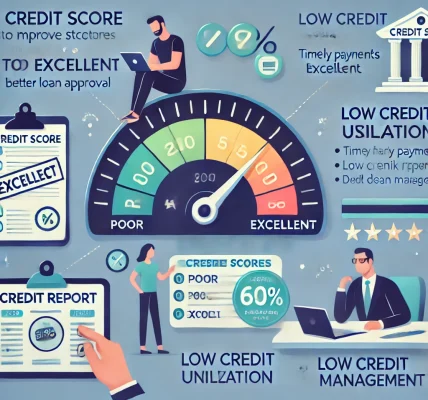Introduction
Buying a home is a significant milestone in life, but it can also be a daunting experience—especially for first-time buyers. Understanding the home loan process can help you navigate it smoothly and make informed financial decisions. This guide provides a detailed, step-by-step approach to securing a home loan, ensuring you are well-prepared from start to finish.
Step 1: Assess Your Financial Health
Before applying for a home loan, evaluate your financial situation to determine how much you can afford. Consider factors such as:
- Your income and employment stability
- Monthly expenses and existing debts
- Credit score (higher scores lead to better loan terms)
- Down payment savings
A clear understanding of your financial standing will help you set a realistic budget for your home purchase.
Step 2: Research Home Loan Options
There are several types of home loans available, each with different features. Some common types include:
- Fixed-Rate Loans – Interest rate remains constant throughout the loan term.
- Adjustable-Rate Loans – Interest rate changes periodically based on market conditions.
- Government-Backed Loans – Programs such as FHA, VA, and USDA loans offer benefits for eligible buyers.
Compare interest rates, loan terms, and lender fees before selecting the best option for your needs.
Step 3: Get Pre-Approved for a Loan
Pre-approval gives you an estimate of how much a lender is willing to offer based on your financial credentials. To get pre-approved, you will typically need:
- Proof of income (pay stubs, tax returns, etc.)
- Credit report and score
- Employment verification
- List of assets and debts
A pre-approval letter strengthens your position as a buyer and shows sellers that you are a serious candidate.
Step 4: Find Your Ideal Home
Once pre-approved, you can start house hunting. Work with a real estate agent to explore properties that fit your budget and preferences. Consider factors like location, neighborhood amenities, and future property value.
Step 5: Make an Offer and Sign a Purchase Agreement
When you find a home that meets your needs, make an offer. If the seller accepts, you’ll sign a purchase agreement outlining the price, closing date, and other essential details. At this stage, you may need to pay an earnest money deposit to secure the deal.
Step 6: Apply for the Home Loan
Submit a formal loan application with the lender of your choice. The lender will conduct a thorough review of your financial profile and may ask for additional documentation. Be prepared to provide:
- Updated income statements
- Bank statements
- Property details
- Debt obligations
Step 7: Home Appraisal and Inspection
The lender will order an appraisal to determine the home’s fair market value. Additionally, a home inspection is recommended to check for any structural or maintenance issues. If significant issues arise, you may renegotiate the deal or request repairs from the seller.
Step 8: Loan Underwriting and Approval
During underwriting, the lender verifies your financial details and assesses the risk of lending to you. They will:
- Confirm employment and income stability
- Analyze your credit history
- Review property appraisal and title reports
If everything checks out, the lender issues a final loan approval.
Step 9: Closing the Loan
The final step is the loan closing, where all parties sign the necessary documents. You will be required to:
- Review and sign the loan agreement
- Pay closing costs (including lender fees, title fees, and taxes)
- Receive the keys to your new home
Once the transaction is complete, you officially become a homeowner!
Conclusion
Navigating the home loan process may seem complex, but by following these steps, you can ensure a smooth and stress-free experience. Careful planning, thorough research, and professional guidance will help you secure the best loan for your dream home.




